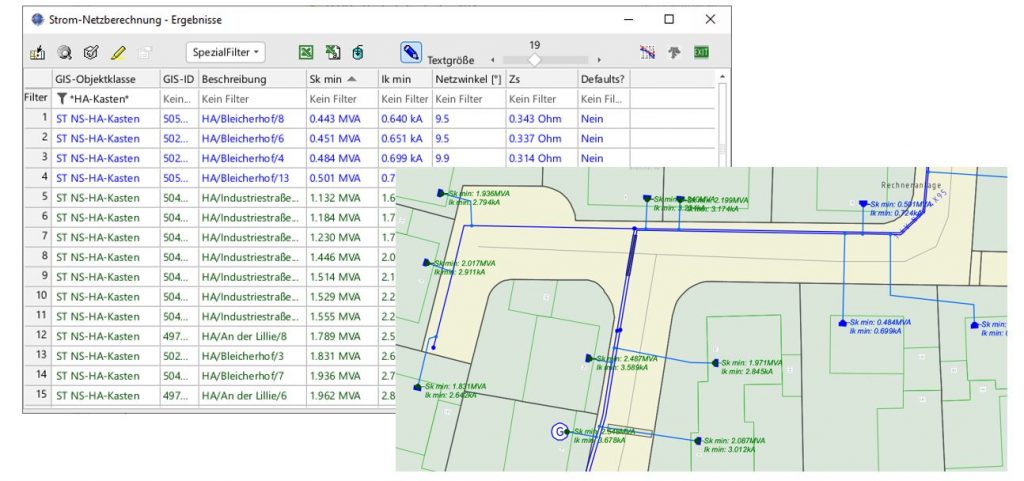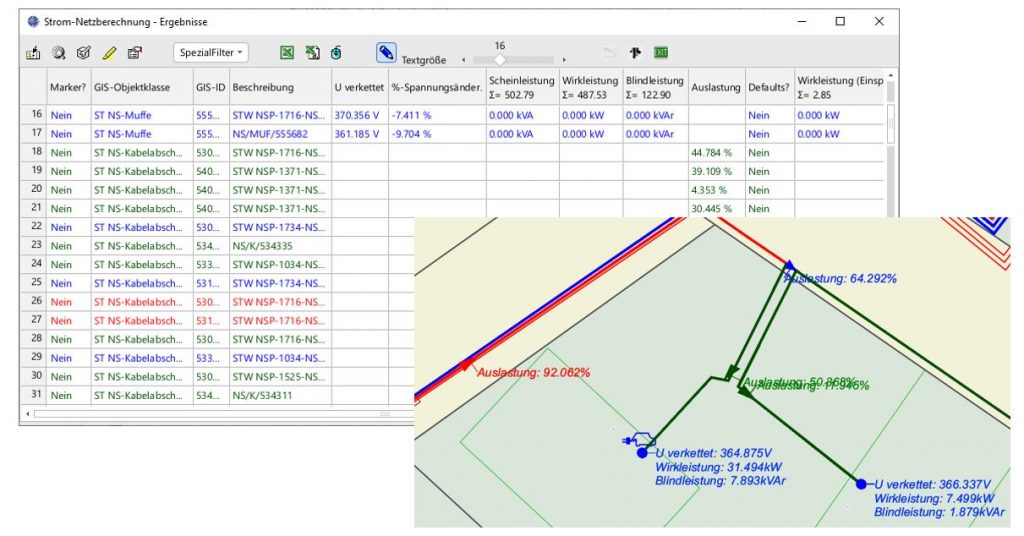
GIS-integrated Network Analysis
The ITS Direct Power Analysis tool enables GIS-integrated power network analyses and supports different network calculations such as short circuit calculations, network feedback assessments (motor start analysis) and power-flow calculations. The advantage of this solution is that it is based on real mathematical calculations and not on estimations. Furthermore, external network computational programmes are not required as the calculations are directly carried out in GIS.
- Standard data model without data model extensions
- Simple and intuitive usability
- Power-flow and short circuit calculations
- Network feedback assessments
- Implementing existing data sources
Product Description
Voltage Quality Assessment
The minimum and maximum short circuit power including its characerisitcs are calculated in GIS using the IEC 60909 / 2001 standard. The calculation method applies the universally accepted network calculation where relative values (per unit, p.u.) are used instead of absolute values. The calculation method is also displayed in the interface. The short circuit calculation produces results regarding the short circuit performance and power and also displays the network angle of respective node objects (busbars, joints, house connections…). These results are visualised in the GIS viewer using various colours. This helps the user to identify critical network areas via the colours.


Network Feedback Assessment
In order to assess the effects of voltage dips caused by load changes (e.g. by switching on motors), a network feedback assessment is integrated into the ITS Direct Power Analysis. The short circuit performance and network angle at the connection point are used to perform the calculation, i.e. the result of a previous short circuit calculation. Asynchronous motors, ohmic equipment, welding machines and flow heaters are assessed amongs other things. The so-called power-line flicker is taken into account, which is defined by the level, duration and number of voltage fluctuations that are tolerable for consumers.
Power-flow Calculation
In addition to the classic, symmetrical power-flow calculation, the product also offers a special variant for assessing connections involving supply requests. This is achieved by iteratively determining node voltages in GIS using consumption information or power availability. The power load capacity for electricity cables is calculated simultaneously. Furthermore, the load flow direction of electricity cables is visualised in the map. This established solution for calculating power performance in GIS makes use of the GIS-IS-U data model developed by the ITS. By implementing this data model, performance can be calculated using consumption information such as the utilisation factor and usage hours for each sector.


Network Planning and Optimisation
The DPA planning assistant offers you a further tool to not only perform calculations on the existing network, but to also simulate network planning and optimisations. The tool is based on an independent data model specially designed for planning purposes so that standard objects don’t have to be adapted for the calculation. Integrated assistants offer planning tools for various scenarios such as
- Cable profile modifications
- Parallel cables
- Network extensions
- Direct cables
- Redirecting loops
- Switching
Conclusion
Due to its simple and intuitive usability, ITS Direct Power Analysis is an indispensable tool for performing operational and strategic network calculations. The software supports operational managers in assessing network feedback when connecting new plants. Furthermore, the software also offers tools for planning network expansions, larger customer plants and network optimisations. As this tool can also be implemented as a batch job, it is suitable to assess the overall network and voltage quality. Thus, ITS Direct Power Analysis offers essential support for network management in regards to investment requirements.














